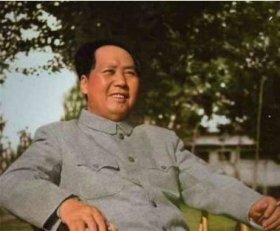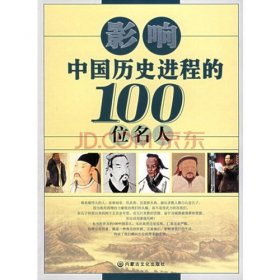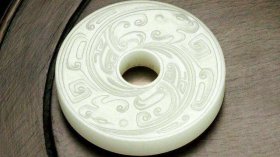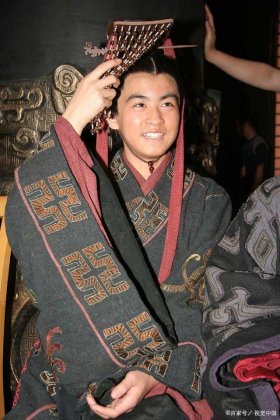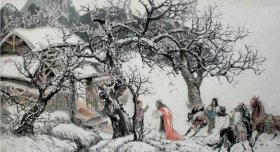university-书讯:《Silk Roads: From Local Realities to Global Narratives》
-
university,wake

- 中国历史故事-小虎历史故事网
- 2023-08-01 08:54
- 小虎历史故事网
university-书讯:《Silk Roads: From Local Realities to Global Narratives》 ,对于想了解历史故事的朋友们来说,university-书讯:《Silk Roads: From Local Realities to Global Narratives》是一个非常想了解的问题,下面小编就带领大家看看这个问题。
原文标题:书讯:《Silk Roads: From Local Realities to Global Narratives》
· Author: Jeffrey D.Lerner&Yaohua Shi
· Item Weight :2.05 pounds
·Hardcover :312 pages
·ISBN-10 :1789254701
·ISBN-13 :978-1789254709
·Product Dimensions :6.75 x 1 x 9.5 inches
·Publisher :Oxbow Books (September 22, 2020)
In recent decades, there has been a new surge of interest in the history and legacies of the Silk Roads both within academic and public discourses. A field of Silk Roads Studies has come into its own. Consciously mirroring the temperament of its subject, the field has moved out of the narrow niches of particular disciplines to become a truly interdisciplinary endeavor. New research findings about the historical operations of the Silk Roads and interpretations of their legacies for the modern and contemporary world have broken down geographical and temporal divides that once demarcated the Silk Roads as primarily pre-modern and Old World-centered conduits of globalization. In light of these developments, the time is ripe to begin formulating a new definition of the contour of Silk Roads Studies and laying a new foundation for further work in this field.
Silk Roads: From Local Realities to Global Narrativesbrings together leading scholars in multiple disciplines related to Silk Roads studies. It highlights the multiplicity of networks that constituted the Silk Roads, including land and maritime routes, and approaches the Silk Roads from Antiquity to China’s One Belt One Road Initiative from Afro-Eurasia to the Americas. This holistic approach to understanding ancient globalization, exchanges, transformations, and movements - and their continued relevance to the present - is in line with contemporary academic trends toward interdisciplinarity. Indeed, the Silk Roads is such an expansive topic that many approaches to its study must be included to represent accurately its many facets.
The volume emphasizes exchange and transformation along the Silk Roads - moments of acculturation or hybridization that contributed to novel syncretic forms. It highlights the multiplicity of networks that constituted the Silk Roads, including land and maritime routes, and approaches to the Silk Roads from Antiquity to China’s One Belt One Road Initiative from Afro-Eurasia to the Americas.
Table of Contents
1. Networks, Cities, and FrontiersJames Millward (Georgetown University), What Do We Mean by ‘Cultural Exchange’ on the ‘Silk Road’? Thoughts from a Study of the Eurasian Lute
Tansen Sen (New York University-Shanghai), Against “Silk Road(s)”! Alternatives to Understanding Premodern Cross-Regional Interactions
Nicola Di Cosmo (Institute of Advanced Study), Ecological Frontiers, Economic Exchange, and the Origins of the Silk Road
Michael L. Bates (American Numismatic Society), Restructuring Central Asia by Place And Time
2. MobilityWU Xin (Fudan University), The Achaemenid Empire and the Formation of the Silk Roads
Jennifer C. Post (University of Arizona), New Trade Routes, Local Soundways, and Environmental Impact: Changing Pastoral Soundscapes and Lifeways in Inner Asia
Aleksandr Naymark (Hofstra University), The Sogdians and the Silk Road: The Emerging Contours of a Complex Relationship
QI Xiaoyan (Changzhi University), Sogdians in Shaanxi during the Northern Dynasties(386-618AD):中国历史名人美德故事
Chinese Literary Sources and Archaeological Evidence
3. Art, Architecture, and DanceNancy S. Steinhardt (University of Pennsylvania), The Role of Chinese Architecture and Its Decoration along Sixth-Tenth Century Silk Roads
LUO Di (New York University-Shanghai/Wake Forest University), Diamond in the Square: Lantern Ceilings in Traditional Asian Architecture
Bernadine Barnes (Wake Forest University), Prints and Pilgrims on the Silk Road
Judith A. Lerner (New York University), Silk Roads and the Impact of Sogdian Dance
Stewart Carter (Wake Forest University), Music for the Sogdian Whirl: Instruments, Ensembles, and Dancers in Buddhist Art of the Tang Dynasty
SHI Yaohua (Wake Forest University), From Dunhuang to Uji: Pure Land Iconography And Architecture along the Silk Road
4. Maritime TradeJeffrey D. Lerner (Wake Forest University), The Case for Shipwrecked Indians in Germany
James A. Anderson (University of North Carolina-Greensboro), Pearls and Power: Chōla’s Tribute Mission to the Northern Song Court within the Maritime Silk Road Trade Network
Hyunhee Park (The City University of New York, John Jay College and Graduate Center), Local and Global: Canton during the Pax Mongolica
John Ruddiman (Wake Forest University), Soldier to Supercargo, Continental to Consul: Samuel Shaw’s Pursuits of Independence on an Oceanic “Silk Road”
5. Materials of PrestigeTouraj Daryaee (University of California-Irvine), Hoards and Roads: What Can the Sasanian Silver Drahms Tel中国历史故事赵高
l Us about the Silk Road?
DU Dan (University of North Carolina-Charlotte), Flying Cash: Credit Instruments on the Silk Roads
Wayne Silver and Cecil J. Saunders (Wake Forest University), A Transient Receptor Potential (TRP) along the Silk Road: How We Detect and Use Spices
Monique O’Connell (Wake Forest University), Silk Road Pharmacy: Apothecaries, Plague Remedies, and Print in Early Modern Venice
Eric Dursteler (Brigham Young University), Spice and Taste in the Culinary World of the Early Modern Mediterranean
6. Worlds of Discover林汉达中国历史故事全集
ySHI Yunli (University of Science and Technology of China), Charting the Chinese Sky With Western Observations: The Star Maps Made by Jesuit Astronomers in the Late Ming Dynasty Revisited
Chapurukha M. Kusimba (American University), Exploring Maritime Networks Between China and East Africa
ZHANG Qiong (Wake Forest University), Strange Journeys of the Yakṣas: Politics, Science, and Cultural Imagination in a Triangular Encounter between Early Modern Europe, Ming-Qing China, and Tokugawa Japan
7. Contemporary PlacesMargaret Sarkissian (Smith College), From Fabled Port to Muddy Lagoon: The Fluctuating Fortunes of One Stop on the Maritim中国历史的爱国志士的故事50字
e Silk Road
Saba Samee (Institute for Art and Culture, Lahore), The Development of the Karakoram Highway into a Global Economic Corridor
Chad Haines (Arizona State University), Placing Cosmopolitanism: Global, National, and Local Imaginings of the Silk Route in Pakistan
Charles Wilkins (Wake Forest University), Gambling with History? The Persian Card Room at Graylyn International Conference Center
(责任编辑:admin)原文出处:http://his.newdu.com/a/202011/06/1563707.html
以上是关于university-书讯:《Silk Roads: From Local Realities to Global Narratives》的介绍,希望对想了解历史故事的朋友们有所帮助。
本文标题:university-书讯:《Silk Roads: From Local Realities to Global Narratives》;本文链接:http://gazx.sd.cn/zggs/13466.html。
猜你喜欢
- 世界历史-葛兆光:评History of Imperial China, Harvard University Press,2009-2013 2023-08-25
- university-从全球史到全球学:全球问题整体研究的深化 2023-08-11
- university-从全球史到全球学:全球问题整体研究的深化 2023-08-11
- 燕京大学-燕京大学 2023-07-17
